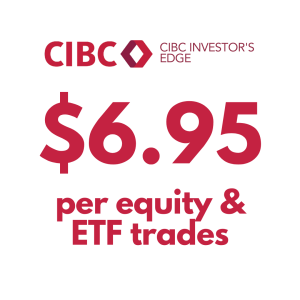
Investing in exchange traded funds (ETFs) can be a great way to diversify your portfolio and capitalize on strong yields without taking on excessive amounts of risk. If you’re considering investing in ETFs in Canada, you’ll want to ensure the funds offer good capital appreciation potential and a stream of income. Fortunately, there are high yield ETFs in Canada which can help you achieve these goals!

Table of contents
- What is a high yield ETF?
- Why should you invest in high yield ETFs?
- Top 7 High Yield ETFs
- 1. iShares Canadian Financial Monthly Income ETF (FIE)
- 2. iShares TSX 60 Index ETF (XIU)
- 3. BMO Canadian Dividend ETF (ZDV)
- 4. iShares Canadian Dividend Aristocrat ETF (CDZ)
- 5. iShares Core MSCI Quality Dividend Index ETF (XDIV)
- 6. Vanguard Canadian High Dividend Yield ETF (VDY)
- 7. iShares Canadian Select Dividend ETF (XDV)
- What is the highest dividend ETF in Canada?
- Advantages of High Yield ETFs
- Disadvantages of High Yield ETFs
- Should I invest in a high yield dividend ETF?
To help narrow down your choices, we’ve put together a list of 7 high yield ETFs for Canadian investors. By using this list, you’ll have one less thing to research so you can begin growing your wealth with confidence. Read on for our detailed assessment of each fund’s key characteristics, upsides and challenges, as well as some pro tips from top financial advisors.
Related Reading: Bonds in Canada: A Complete Guide
What is a high yield ETF?
A high yield ETF, also known as a “junk bond ETF” in slang, is a type of exchange-traded fund (ETF) that holds a portfolio of high yield assets. High yield bonds and assets are debt securities issued by companies or entities with a lower credit rating, meaning they are considered to be higher risk. In other words, these assets are high risk, high reward. These bonds pay a higher rate of interest and dividends to compensate for the greater level of risk the investor assumes. Although, the investor also risks losing their money should the underlying asset fail.

Match to your perfect advisor now.
Getting started is easy, fast and free.
Why should you invest in high yield ETFs?
Investing in high yield ETFs in Canada can be an attractive option for investors who are looking for a stream of income or risk variety. Furthermore, with an ETF, you get the added benefits of both diversification and liquidity, allowing exposure to multiple assets from a single purchase.
However, it is important to note that due to their higher level of return potential, these type of investments also carry a higher level of risk. Be sure to consider the level of risk carefully. In most cases, it’s wise to invest in stable, safe investments in addition to high risk investments. That way, you aren’t putting all your money at risk, only a portion.
Related Reading: 5 Best Money Market ETFs in Canada
Top 7 High Yield ETFs
| ETF Ticker | Management Company | Management Expense Ratio | Assets Under Management (AUM) | Yield |
| FIE | BlackRock Asset Management Canada Limited | 0.91% | $936M | 7.18% |
| XIU | BlackRock Asset Management Canada Limited | 0.18% | $11B | 3.37% |
| ZDV | Bank of Montreal (BMO) Asset Management | 0.39% | $1B | 4.35% |
| CDZ | BlackRock Asset Management Canada Limited | 0.66% | $904M | 4.07% |
| XDIV | BlackRock Asset Management Canada Limited | 0.11% | $830M | 4.86% |
| VDY | Vanguard Investments Canada Inc. | 0.22% | $2.15B | 0% |
| XDV | BlackRock Asset Management Canada Limited | 0.55% | $1.6B | 4.82% |
1. iShares Canadian Financial Monthly Income ETF (FIE)
iShares Canadian Financial Monthly Income ETF attempts to provide monthly income to investors. They do so by investing in a diversified portfolio of Canadian financial sector securities, such as stocks of banks, insurance companies, and other financial institutions. The ETF is managed by BlackRock Asset Management Canada Limited and is listed on the Toronto Stock Exchange. The ETF also follows a strategy of investing in high-yield securities, which means it is subject to credit and interest rate risks. The fund’s profits come from dividends, interest and capital gains. The ETF also aims to provide liquidity and low volatility through its monthly distribution policy.
2. iShares TSX 60 Index ETF (XIU)
iShares TSX 60 Index ETF aims to provide returns that closely correspond to the performance of the S&P/TSX 60 Index. This measure is a market capitalization-weighted index of 60 of the largest publicly traded companies in Canada. Further, this index is a benchmark for the Canadian equity market and includes companies from various sectors such as financials, energy, materials, consumer discretionary, healthcare, and others.
The ETF is managed by BlackRock Asset Management Canada Limited and is listed on the Toronto Stock Exchange. Considered as a passive investment strategy, which means it seeks to replicate the performance of the underlying index. The MER is less compared to actively managed funds.
3. BMO Canadian Dividend ETF (ZDV)
BMO Canadian Dividend ETF provides income and capital appreciation by investing in a diversified portfolio of Canadian companies that pay dividends. The ETF is managed by Bank of Montreal Asset Management and is listed on the Toronto Stock Exchange. The fund’s profits come from capital gains and dividends.
CIBC Investor’s Line Offer
Up to $6.95 per online stock or ETF trade. Plus, there’s no minimum account balance.
4. iShares Canadian Dividend Aristocrat ETF (CDZ)
iShares Canadian Dividend Aristocrat ETF aims to provide income and capital appreciation by investing in a diversified portfolio of Canadian companies that have a history of increasing dividends over time. The ETF is called Dividend Aristocrats as it tracks the performance of the S&P/TSX Canadian Dividend Aristocrats Index. This index is made up of Canadian companies that have increased their dividends for at least five consecutive years. The companies included in the fund have a record of consistent dividend growth, and a strong financial position, which reduces the risk of dividend cuts. The ETF is managed by BlackRock Asset Management Canada Limited and is listed on the Toronto Stock Exchange. The fund’s profit comes from dividend and capital gains, mainly.
5. iShares Core MSCI Quality Dividend Index ETF (XDIV)
iShares Core MSCI Quality Dividend Index ETF provides income and capital appreciation by investing in a diversified portfolio of high-quality dividend-paying companies globally. The ETF tracks the performance of the MSCI World Quality Dividend Index; an index that is made up of companies that are considered to have high-quality characteristics such as strong profitability, low financial leverage and a consistent record of paying dividends.
The ETF is managed by BlackRock Asset Management Canada Limited and is listed on the Toronto Stock Exchange. The fund’s profit comes from dividends and capital gains for the most part.
6. Vanguard Canadian High Dividend Yield ETF (VDY)
Vanguard Canadian High Dividend Yield ETF is a Canadian exchange-traded fund (ETF) that seeks to track the performance of the FTSE High Dividend Yield Canada Index. The ETF holds a diversified portfolio of Canadian equities that pay high dividends, and is under the management of Vanguard Investments Canada Inc. The ETF is suitable for investors looking for a way to gain exposure to high-yielding Canadian equities in a single, low-cost investment.
7. iShares Canadian Select Dividend ETF (XDV)
iShares Canadian Select Dividend ETF is a Canadian exchange-traded fund (ETF) that seeks to track the performance of the Dow Jones Canada Select Dividend Index. The ETF holds a diversified portfolio of Canadian equities that pay dividends. It is under the management of BlackRock Asset Management Canada Limited. The ETF is suitable for investors looking for a way to gain exposure to dividend-paying Canadian equities in a single, low-cost investment. The fund typically has higher yield than the broad Canadian market.
Related Reading: Best Monthly Dividend Stocks in Canada for 2022
What is the highest dividend ETF in Canada?
From our list above, iShares Canadian Financial Monthly Income ETF has the highest yield at 7.18%. However, this also means this ETF has a high level of risk which investors should consider before investing. In addition, remember that the return of high-yield ETFs can radically change from one moment to the next. The FIE ETF might be the best at the time of writing, but that can quickly change!
Advantages of High Yield ETFs
High yield ETFs can provide investors with several advantages, including a steady stream of income, diversification of investments, low cost, and ease of buying and selling on the stock market. These ETFs typically hold a diverse portfolio of assets, which can help reduce the overall risk of an investment by spreading it across multiple investments.
Disadvantages of High Yield ETFs
The downside of high yield ETFs is the higher level of risk. Investors take on greater risk in exchange for a steady stream of income. In addition, some high yield ETFs in Canada experience volatility on the stock market compared to more stable, reliable investments.
Should I invest in a high yield dividend ETF?
High yield ETFs provide a lot of advantages, but they also come with risks. Before deciding to invest in high yield ETFs in Canada, consider your risk tolerance and financial goals. It can also help to assess your current portfolio and whether there’s room for more high risk investments. Good luck on your investment journey!
Read More: Best Dividend ETFs in Canada for 2022

